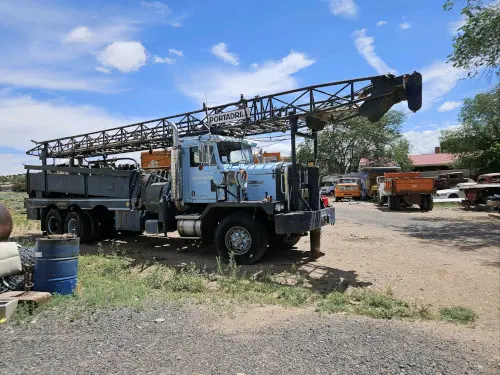Santa Fe Water Well Drilling Deep Borewell Advantages

Santa Fe Water Well Drilling Deep Borewell Advantages – By Boylan Water Well Service & Supply 505-438-3416
Compared to shallow wells when Santa Fe water well drilling, deep borewells that tap into deeper aquifers offer some major advantages.
These mammoth holes in the ground are called borewells or deep wells. And they may be the secret to keeping Santa Fe’s water faucets flowing.
Keep reading!
Digging Down to Ancient Aquifers
Shallow wells normally just won’t cut it here when Santa Fe water well drilling. They only reach down about 100 feet at most. That’s not nearly deep enough to tap into the ancient aquifers that hold vast amounts of “fossil water.” This is groundwater that seeped underground thousands of years ago and has been trapped in rocky reservoirs ever since.
By boring wells that are hundreds or even over 1000 feet deep, well drillers can finally hit the mother lode. We’re talking about ten times more water than shallow wells can reach. Enough to quench even Santa Fe’s thirstiest months.
These oases hidden under the desert are pure gold. And modern well-drilling equipment lets us prospect deep underground, without ever picking up a shovel. Site the perfect spot, bring in the rigs, and let the drill bits bore through hundreds of feet of rock and sediment until they strike water.
It seems these deep wells are our best bet for finding enough water to get Santa Fe through the dry years ahead. And that’s good news for all of us who call this high desert home.
Withstanding Santa Fe’s Dry Seasons
Every summer, us Santa Feans watch the forecast like hawks. Is the monsoon coming this year, or will the rain fail us again? Will the wells and reservoirs run dry before fall? When shallow wells depend on yearly rainfall to recharge, there’s no guarantee they’ll last the whole dry season.
But most deep borewells laugh in the face of drought. No matter how little rain falls, they keep pumping steady streams of water from far below. These deep stone aquifers don’t dry up as quick or easy.
Having wells that can keep providing through the dog days of summer, without slowing to a trickle, means everything. It means our gardens stay green, our pools stay full. It means the taps and toilets keep running at home, school, work and around town.
In parched times, deep wells are oases of reliability. And in Santa Fe, having water we can rely on means more than I can say.
Delving Below the Pollution
I hate to say it, but much of Santa Fe County’s groundwater is polluted. Years of pesticides, chemicals, and waste seeping down have fouled our shallow aquifers. When your well is only 30 feet down, it gets contaminated fast.
But deep borewells draw water from way below all this pollution. At hundreds or thousands of feet down, there are aquifers that have been naturally filtered for ages. Down there, the only liquid touching the groundwater seeped through layers of stone, sand and clay over centuries.
These deep wells bring up water so fresh and pure, you’d never guess it came from the dry dusty earth. It’s like finding a secret spring in the middle of the desert. For me, knowing the water from my faucet is clean and safe means more than gold.
Around here, pure untainted water is something to be thankful for. And deep wells are the best way to get it.
Keeping Wells Flowing in Dry Months
When late spring comes around, I get nervous. I start checking our shallow well every day, turning the taps on less, and saying little prayers the rain comes soon. Will our well have enough to get us through this year?
But the neighbors with deep borewells don’t worry. Even in the driest months, when the rest of us are saving every drop, their wells keep pumping out water, same as ever.
These wells tap into aquifers so deep and vast that they aren’t affected by seasonal dips in rainfall. While my shallow well sputters and slackens output from April to July, deep wells keep flowing steady, drought or no drought.
Having that kind of year-round reliability, in a place as dry as Santa Fe, is priceless. It means growing crops and running businesses with minimal disruption. It means homes always have sufficient supply. Reliable water all year long – for me, that’s worth drilling deep.
The Costs and Lifespan
Sure, deep wells sound great. But there’s no denying it takes serious equipment and expertise to drill hundreds or thousands of feet down. Installing a borewell will cost a pretty penny more than a standard shallow well.
Once the well is drilled, you also need a higher capacity pump and stronger casing materials to handle the pressures and volumes at that depth. And repairs call for specialized knowledge when things are buried so deep.
But in the long run, these upfront costs can pay off. Pumps use less energy pulling from such a plentiful pressurized aquifer. And with good maintenance, deep borewells can keep pumping for 30 or 40 years, for far less than drilling a new shallow well every decade.
If you ask me, footing the bill for paying for Santa Fe well drilling for a deep well that lasts, and invests in Santa Fe’s water future, is money well spent.